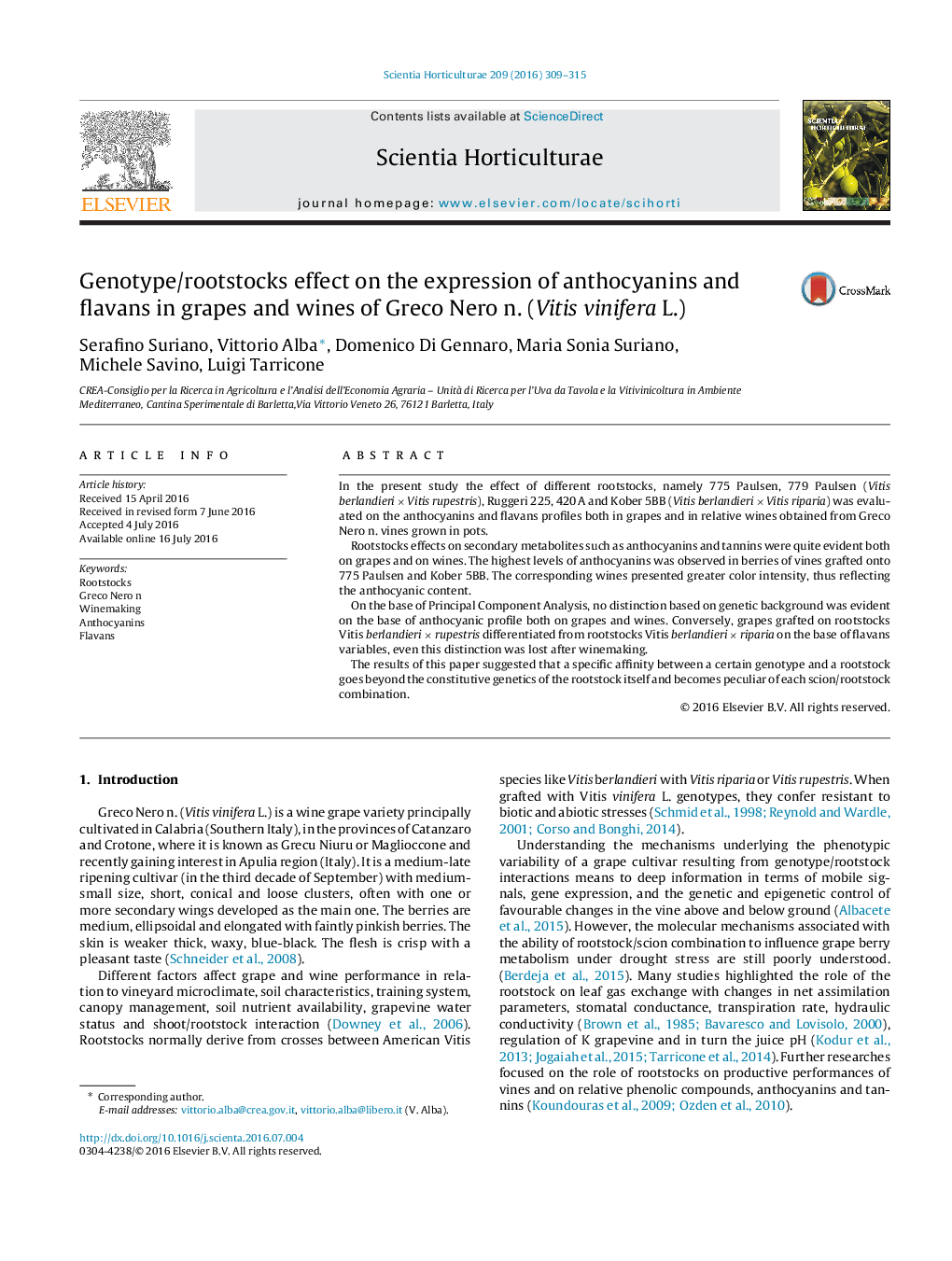| Article ID | Journal | Published Year | Pages | File Type |
|---|---|---|---|---|
| 4565984 | Scientia Horticulturae | 2016 | 7 Pages |
•Rootstocks have a role in anthocyanins and flavans profiles in grapes and wines.•775 Paulsen and Kober 5BB revealed to confer higher anthocyanins to Greco Nero n.•Vines grafted onto 775 Paulsen and Kober 5BB yielded wines with greater color intensity.•Differences in terms of flavans due to rootstocks were lost after winemaking.•Affinity genotype/rootstock becomes peculiar of each scion/rootstock combination despite the genetic constitution of rootstock.
In the present study the effect of different rootstocks, namely 775 Paulsen, 779 Paulsen (Vitis berlandieri × Vitis rupestris), Ruggeri 225, 420 A and Kober 5BB (Vitis berlandieri × Vitis riparia) was evaluated on the anthocyanins and flavans profiles both in grapes and in relative wines obtained from Greco Nero n. vines grown in pots.Rootstocks effects on secondary metabolites such as anthocyanins and tannins were quite evident both on grapes and on wines. The highest levels of anthocyanins was observed in berries of vines grafted onto 775 Paulsen and Kober 5BB. The corresponding wines presented greater color intensity, thus reflecting the anthocyanic content.On the base of Principal Component Analysis, no distinction based on genetic background was evident on the base of anthocyanic profile both on grapes and wines. Conversely, grapes grafted on rootstocks Vitis berlandieri × rupestris differentiated from rootstocks Vitis berlandieri × riparia on the base of flavans variables, even this distinction was lost after winemaking.The results of this paper suggested that a specific affinity between a certain genotype and a rootstock goes beyond the constitutive genetics of the rootstock itself and becomes peculiar of each scion/rootstock combination.
